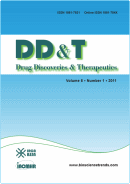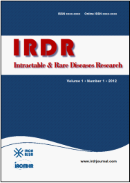Drug Discov Ther. 2025;19(3):184-188. (DOI: 10.5582/ddt.2025.01035)
Opsin 3-mediated regulation of blue light-induced β-hexosaminidase release from mast cells
Yamamoto H, Kiryu M, Sawaguchi Y, Yamada T
The human body is constantly exposed to light from the environment, and intense light is a source of skin inflammation. Although cellular responses to high-energy ultraviolet light have long been reported, the photoresponsive mechanism occurring after skin exposure to visible light remains unclear. This study focused on mast cells involved in inflammation and examined the expression of photoreceptors and their effects on degranulation in mast cells. Photoreceptors expressed in two mast cell cultures (P-815 and RBL-2H3) were examined by RT-PCR and western blotting to demonstrate that OPN3 was expressed in RBL-2H3 cells. Next, the effect of visible light exposure on degranulation was evaluated by measuring β-hexosaminidase activity in the culture medium. The results show that β-hexosaminidase release was most strongly induced at wavelengths of ~460 nm, which corresponds to the absorption peak of OPN3. In addition, suppression of OPN3 expression by siRNA reduced β-hexosaminidase release at 460 nm. These results suggest that OPN3 expressed in mast cells mediates degranulation in skin inflammation that occurs upon exposure to intense light.







